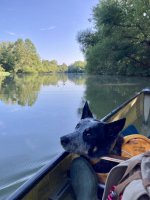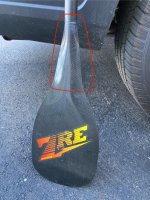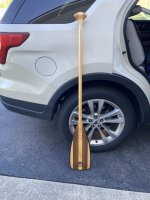I was out paddling some still water at sunrise. Bass boats were here and there, and I tried to pass without disturbing the water, no noise. It became a game, getting as close as I could before the fisherman noticed me. My blade is a bent shaft ZRE WW, not real quiet, no matter how careful with entry or exit.
Do you have a preferred blade shape for quiet time paddling, putting the sneak on critters?

Do you have a preferred blade shape for quiet time paddling, putting the sneak on critters?



